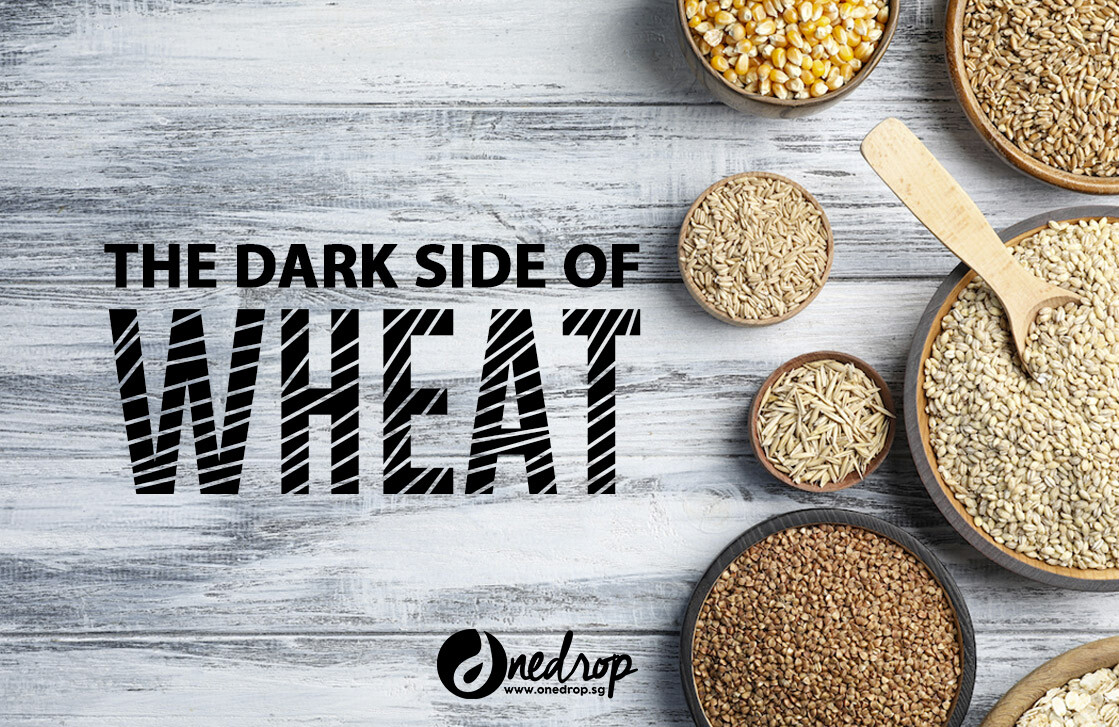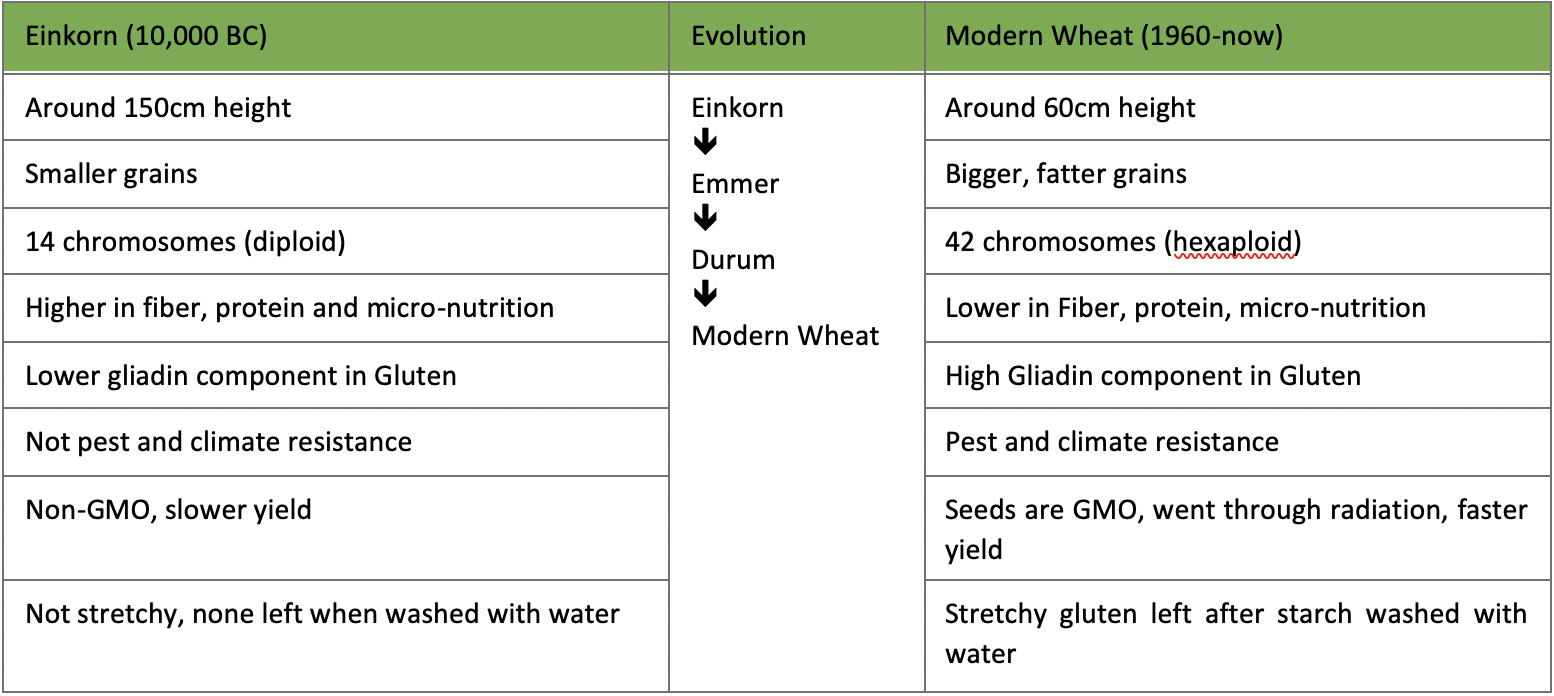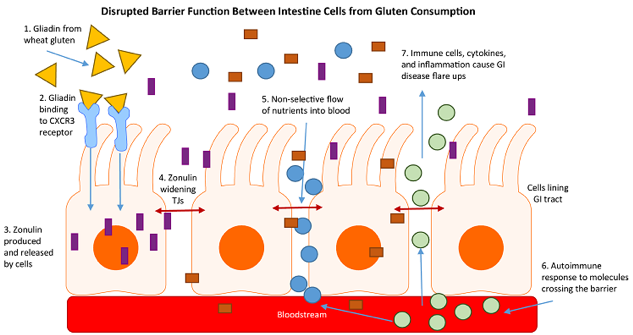
THE DARK SIDE OF WHEAT
This post is contributed by One Drop member –Eva Rosdiana.
Grains, especially wheat is perceived as healthy food. In Asia, “whole-wheat” or “whole-grain” is thought to be better than rice. Health practitioners recommend including grain in our diet, and wheat is among the top choice. In Singapore, food packaging with “Higher in Wholegrain” label has healthier choice logo on packaging.
In 2011, a cardiologist, Dr. William Davis published a book titled: Wheat Belly. 2 years later, a neurologist, Dr. David Perlmutter published another book: Grain Brain. These 2 books explain the danger of high carbohydrate food, particularly wheat and gluten.
Many research shows that gluten disrupts our digestive system. Gluten causes lots of intolerance and even allergies. Yet, Dr. Davis wrote in Wheat Belly that the danger of wheat is far beyond gluten intolerance and allergy.
Modern Wheat is High-GMO
But why did people in the ancient civilisation (like in the bible) seem fine with wheat? It is because the wheat that we eat nowadays is so much different from the ancient wheat.
Anthropologist recorded Einkorn as the first cultivated wheat in human civilisation. It was around 150cm in height, produced small grain, and has low yield. It has a total of 14 chromosomes (7 diploids). Through natural evolution and hybridisation, the ancient wheat evolved to Emmer, Spelt, and Durum wheat.

Every evolution added new chromosomes into the species. The current wheat has undergone a very heavy process of genetic modification. The seeds have gone through radiation to create a species that can produce a much higher yield, bigger grain, and resistant to climate and pest. This genetic modification is one of the main causes why modern wheat can result in intolerance and allergies.
Summary of Einkorn vs Modern Wheat

Amylopectin-A
Amylopectin is a branched chain of glucose in high carbohydrate food. Typically, there are 3 types of amylopectin, based on the speed of absorption and insulin spike in our body.
- Amylopectin-A: in Grains.
- Amylopectin-B: in root starchy vegetables such as potato, yam, sweet potato.
- Amylopectin-C: in Legumes.
Amylopectin-A is the highest in glucose and the fastest to break down in our body. Thus, it increases insulin secretion. It causes a high spike in blood glucose, stimulates our appetite, and does not promote high satiety. [Source: Wheat Belly, Dr. William Davis]
Due to the high processing, the current wheat has almost no fiber. As such, it also contributes to the insulin spike and high blood sugar because the glucose molecules are released rapidly into our blood.
Gluten – The indigestible Protein

There are 2 components of gluten: Gliadin and Glutenin (as in the left image). The main problem of gluten lies in Gliadin.
When we eat protein (such as egg, meat), our body breaks down the protein into peptides and subsequently to the smallest part, amino acids. However, our body does not have good enzymes to break down gliadin. Gliadin can only be broken down to peptides and it cannot be absorbed by our gut lining. This is what causes the problem.
Undigested Gliadin Triggers Immune Response

Gliadin weakens Intestinal Wall

Research has shown that gluten causes changes in gut permeability, also known as loss of gut tight junction barrier function in the GI tract. Normally, cells in the GI tract are spaced at a specific distance from each other. These spaces are known as gut tight junctions (TJs) and need to be spaced close to one another in order to have selective flow of nutrients in and out of the gut.
When gliadin from gluten interacts with the CXCR3 receptors on cells within the GI tract, a protein called zonulin was produced and released by cells. Zonulin then reacts with the GI cells, causing gut tight junctions to grow wider. With the gut TJs widened, molecules that are usually too big to fit through can freely flow in and out of the gut. A research team led by Dr. Maria Barbaro at the University of Bologna in Italy believes that zonulin is a potential biomarker candidate for changes in gut permeability-related GI diseases. [source]
Triggers Brain (Neuro) Inflammation
In Non-Celiac Gluten Sensitivity (NCGS), gluten-triggered inflammation in the gut can instigate inflammation in the brain, referred to as neuroinflammation. Neuroinflammation has been found to play a central, triggering role in brain-related disease. In NCGS, there is a series of steps in the process that ultimately culminates in neuroinflammation and brain changes.
- Consumption of gluten triggers dysbiosis and gut inflammation and increases the permeability of the intestinal barrier.
- Increased intestinal permeability allows lipopolysaccharides (LPSs) produced by gut bacteria to leak out of the intestine and into the systemic circulation. Leaked LPSs trigger the immune system to release pro-inflammatory cytokines.
- LPSs and pro-inflammatory cytokines in the circulation cause toxins to accumulate in the blood stream, inciting systemic inflammation.
- When systemic inflammation reaches the brain, it creates neuroinflammation.
- Neuroinflammation leads to brain dysfunction, cognitive impairment, and an increased vulnerability to neurodegenerative disease.
Neuroinflammation has been associated with depression and anxiety, bipolar disorder, schizophrenia, ADHD, and an increased vulnerability to neurodegenerative diseases. Therefore, NCGS may be an underlying cause of neuroinflammation, gradually altering the normal, healthy functioning of the brain and leading to manifestations of mental health problems and neurological disease. [source]
Going Gluten-Free
The fundamental basis of treatment for non-celiac gluten sensitivity is removal of gluten from the diet. Research indicates that when gluten is removed from the diets of individuals with NCGS, a complete resolution of symptoms may happen.
A nutrient-dense diet that contains plenty colorful vegetables; some fruit; high-quality sources of animal protein; a healthy balance of fats, nuts, and seeds; and perhaps some whole and high-fiber gluten-free grains like brown rice, millet, oats, quinoa is a great framework for a balanced gluten-free diet.
In South East Asia, our traditional diet is mainly gluten-free. Our staple grain is rice and many of our traditional snacks like Nonya kueh are made from rice, glutinous rice flour, tapioca starch. We can always choose those traditional snacks compared to the western cakes and desserts.
Conclusion
Like sugar, the consumption of wheat should be minimised. Wheat mainly contributes to inflammation and discomfort in our digestive system. Minimising wheat consumption will save our intestine from chronic inflammation. Thus, we’re protecting our body health in general.
If you like Eva’s articles and would like to purchase the Young Living oils or have further clarifications, you may get in touch with Eva via Facebook or Instagram. If you are ready to sign up as member with Eva, you may click here.
















0 Comments